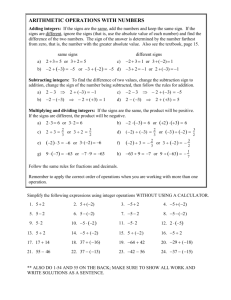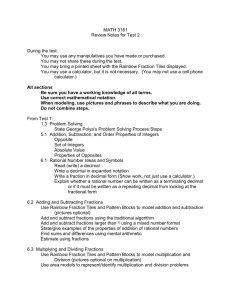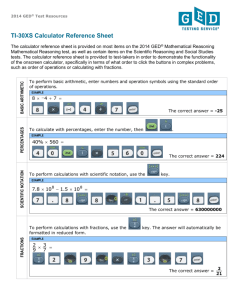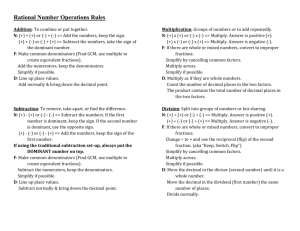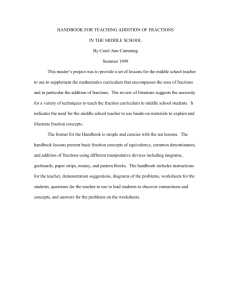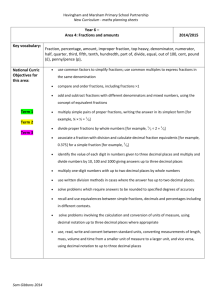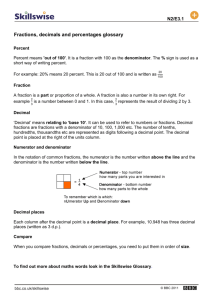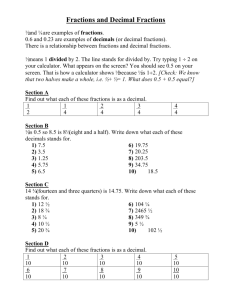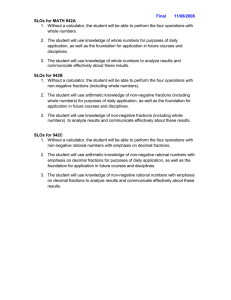5.1 Notes Rational Number
advertisement
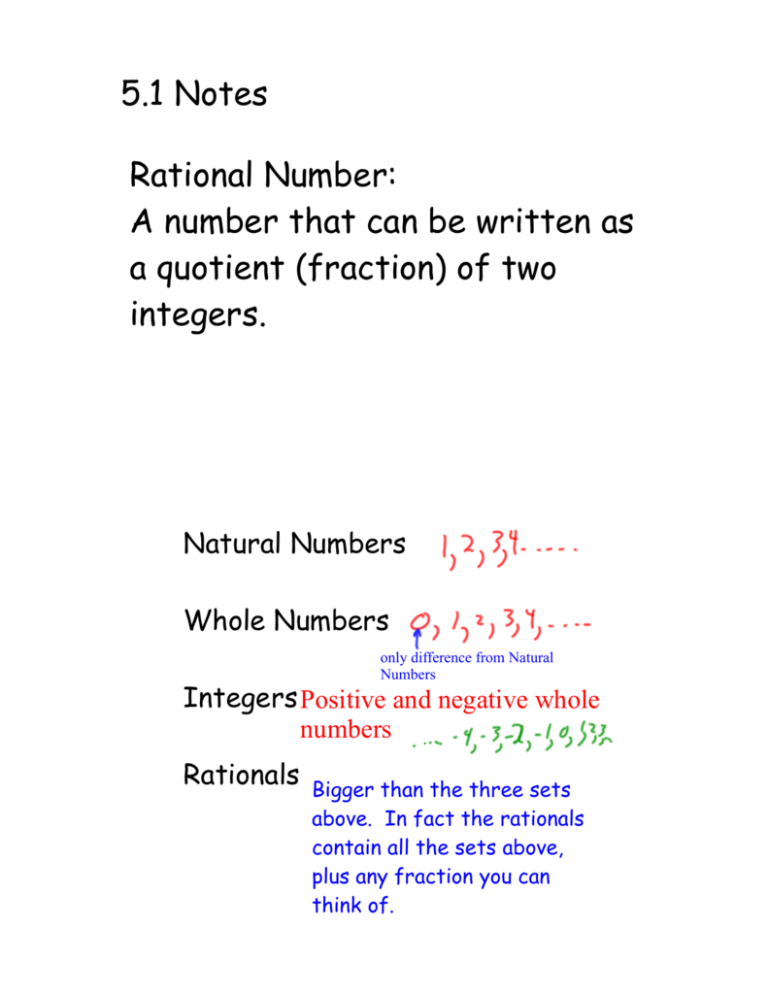
5.1 Notes Rational Number: A number that can be written as a quotient (fraction) of two integers. Natural Numbers Whole Numbers only difference from Natural Numbers Integers Positive and negative whole numbers Rationals Bigger than the three sets above. In fact the rationals contain all the sets above, plus any fraction you can think of. Terminating Decimal It "ends" If you divide it out "the long way" you eventually get a remainder of zero. vs Repeating Decimal a "digit" or a "block" of digits repeat themselves forever. If you divide it out "the long way" you never get a remainder of zero. Examples: 1. Show that the number is rational by writing the number as a "quotient." a. 7 b. -10 c. 5 3/4 d. -3 1/2 2. Write as a decimal: a. 3/8 b. 5/11 c. 1 9/20 d. 29/80 3. Compare (use < , > , < , > , = and use decimals) a. 20/50 ____ 24/54 b. 25/26 ____ 49/51 c. Put in order from least to greatest: -5/4 , -.2 , 4.31 , -3 , 5/2 , -13/3 , 16/3 , -.2 4. Write the decimal as a fraction or mixed number. (Make sure you simplify.) a. .7 b. .3 c. .93 d. .93 e. -3.05 5.2 Notes: "Like Fractions" Two fractions where their denominators (the bottoms) are the same. *To add or subtract fractions: FIRST: Make sure fractions are "like fractions" SECOND: Add/Subtract the Numerators (Top Numbers), Leave the Denominators (Bottom Numbers) the same. Algebraically adding fractions looks like this: a b + c c = a+b c (Note: c = 0) Examples: Evaluate the following without a calculator. (Simplify your final answer) 1. 77 + 9 100 100 2. 3 + 2 8 8 3. -1 + 5 6 6 4. 2 - 7 15 15 () 5. 1 - -7 12 12 Examples: Evaluate the following without a calculator. (Simplify your final answer) 6. 2 3/4 + 1 3/4 7. -6 2/3 + 3 1/3 8. 4 1/5 - 2 3/5 9. -3 2/7 - 6 3/7 . Examples: Evaluate the following without a calculator. (Simplify your final answer) 10. 11. 3a + 5a 20 20 -8 3b - () -2 3b . 5.1: p. 222-223: 20-43 , 49-60 5.2: p. 228-229: 10-25 , 27-43 , 46-51 Use the 5.2 Activity if needed.

